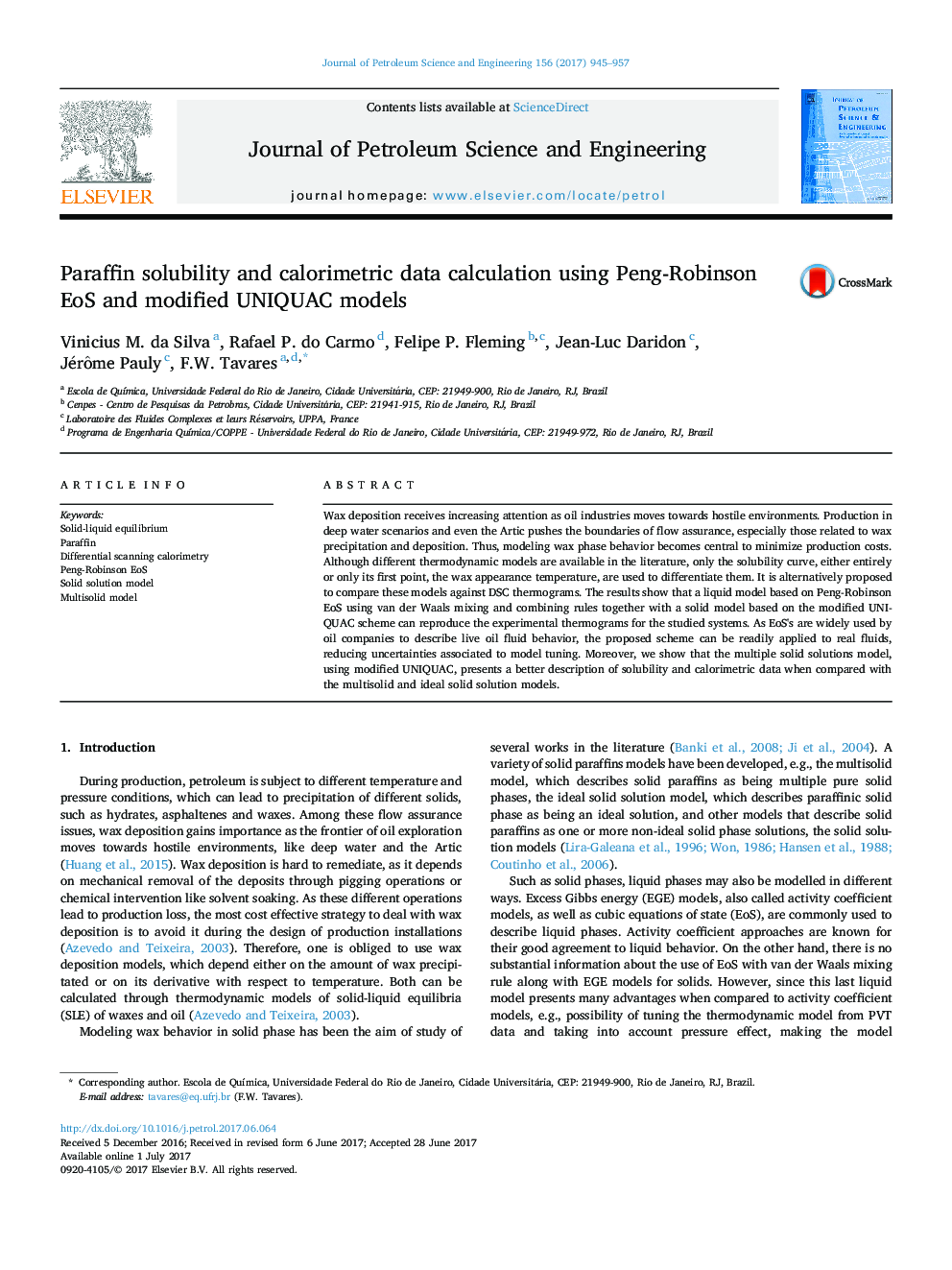| Article ID | Journal | Published Year | Pages | File Type |
|---|---|---|---|---|
| 5484166 | Journal of Petroleum Science and Engineering | 2017 | 13 Pages |
Abstract
Wax deposition receives increasing attention as oil industries moves towards hostile environments. Production in deep water scenarios and even the Artic pushes the boundaries of flow assurance, especially those related to wax precipitation and deposition. Thus, modeling wax phase behavior becomes central to minimize production costs. Although different thermodynamic models are available in the literature, only the solubility curve, either entirely or only its first point, the wax appearance temperature, are used to differentiate them. It is alternatively proposed to compare these models against DSC thermograms. The results show that a liquid model based on Peng-Robinson EoS using van der Waals mixing and combining rules together with a solid model based on the modified UNIQUAC scheme can reproduce the experimental thermograms for the studied systems. As EoS's are widely used by oil companies to describe live oil fluid behavior, the proposed scheme can be readily applied to real fluids, reducing uncertainties associated to model tuning. Moreover, we show that the multiple solid solutions model, using modified UNIQUAC, presents a better description of solubility and calorimetric data when compared with the multisolid and ideal solid solution models.
Related Topics
Physical Sciences and Engineering
Earth and Planetary Sciences
Economic Geology
Authors
Vinicius M. da Silva, Rafael P. do Carmo, Felipe P. Fleming, Jean-Luc Daridon, Jérôme Pauly, F.W. Tavares,
